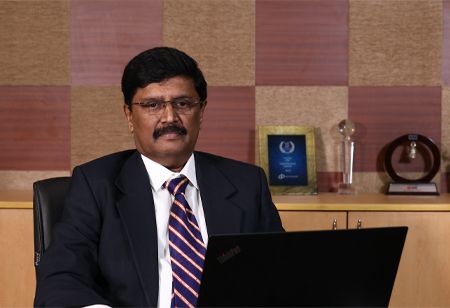
In an exclusive interview with Industry Outlook magazine, Pradeep Kumar Cherot, Joint President and Business Head of the Consumer Products Division of Ginni Filaments, shares the major problems faced by contract manufacturers in adopting digital technologies and offers potential solutions on how they can allocate resources to digitalization efforts. With over four decades of extensive expertise in the FMCG and healthcare industry, he oversees this unit's sales, marketing, operations, and growth strategies. His role entails leading, channelling, and guiding the division to reach greater heights through expanding business while ensuring the smooth management of the unit, including operations.
From your perspective, what are the primary challenges faced by contract manufacturers in adopting digital technologies?
There are many digital platforms available, and all the customers use different platforms. They utilize different technologies and systems. For example, we have 80+ customers, and they all use unique systems. There is no interfacing. Integrating all this is a major challenge that all the contract manufacturers are trying to overcome.
Bigger companies are also not immune to failing in the digital transformation process. They buy an excellent, robust system. However, the implementation of the new system is not easy. In order to evade the difficulty, data is entered manually into the systems, which is often inaccurate or easily manipulated. Irrespective of size, companies are facing problems on the road to 100% integration. Even some organizations have taken four to five years to learn their systems are not fully utilized.
How does the integration of digital technologies impact supply chain visibility, transparency, and resilience?
An adequately integrated digital system strengthens the information network and communication systems. This reduces the cost of the supply chain and provides effective strategic management through data analysis and risk management methods. It also enhances supply chain responsiveness by enabling reduction of lead time, multiple sourcing, quantity flexibility, and timely delivery, which is deliverable by a contract manufacturer.
The impact of generative AI is going to be massive on this ecosystem. The current industry discussing the incorporation of Gen-AI is the equivalent to earlier discussions regarding the integration of electricity, and prior to that, it was the mechanical machines. AI is the catalyst that will lead to the automation of the contract manufacturing industry.
Manufacturing facilities are going to be smart factories or become smart with regard to the supply chain, which will give them a competitive edge on the basis of transportation facilities. This will result in a miniaturization of factories and reduced manpower.
How will the smart automation process improve the recycling capabilities of the manufacturing industry?
In the future, the smart tech will actually reduce the total wastages in fabrics, if you see a bell curve, there will be a tolerance level, and this tolerance level will be reduced to an extent, so there is no direct but indirect reduction. The matter of recycling is a subject of its own.
Companies at the moment are not dedicating much resources to recycling as they are mostly riddled with contaminants and inefficient machines. But, with AI and other technologies, surveillance can be improved to mitigate this shortcoming.
What advice or recommendations would you offer to contract manufacturers seeking to embrace Industry 4.0 principles and enhance their competitive advantage?
This technology should be used consciously, manufacturers should ensure the system they select should be able to provide for their desired deliverables, and all challenges must be accounted for before implementing the new technology.
The future of contract manufacturing is smart manufacturing, and early birds can reap the benefits of this revolution. In India, right now, a lot of manufacturing doesn’t have digital technologies, particularly MSMEs, so this is one advantage they have to keep at the back of their head.
If companies have to transition to a purely digital infrastructure, the first thing they have to consider is the resources. It can be soft resources or the investment required for the systems, the labor required, and the laborers to operate the systems. These are the primary challenges. Companies should not over-engineer or overdo more than their requirements. This can ensure faster compliance from their labour force, which is important for them to remain competitive in the markets.
The management should pass down the message in such a way that the ideas should percolate to all the levels of the company so that the change is accepted with minimal to no resistance. If the culture is passed down the line, it will be helpful to implement newer systems in the companies.
What are the levels of cost cuttings and savings companies can see in terms of compared to their non-digitalized past?
Instead of expressing this with numbers or percentages, it can be explained with gains and losses. If an employee is unable to keep up, he will fall behind. It is the same with industries, if pace can’t be kept up with the market, they will be replaced. The loss isn’t measured in terms of capital here, it is the unknown number of opportunities lost due to not staying relevant in the market.
We use cookies to ensure you get the best experience on our website. Read more...